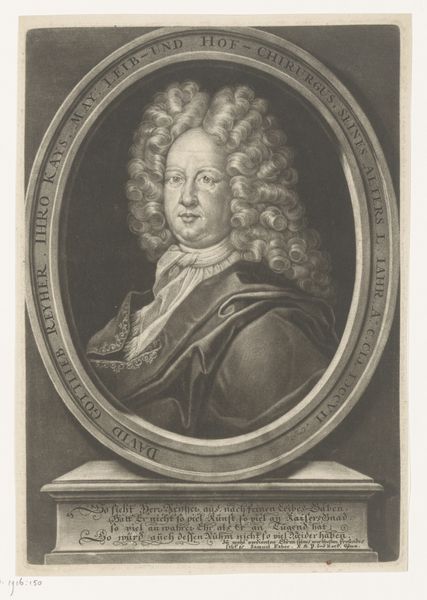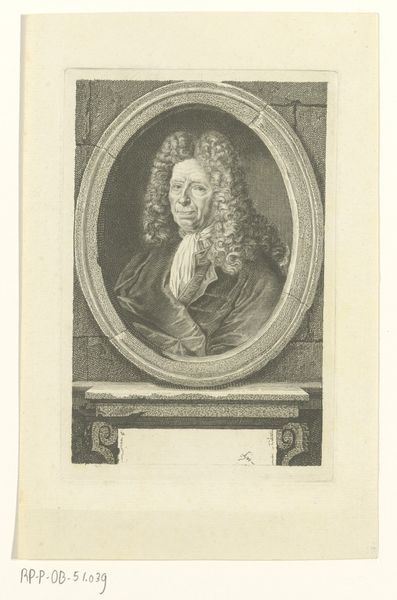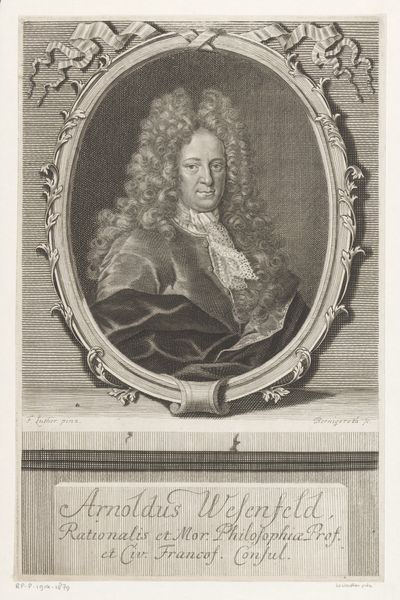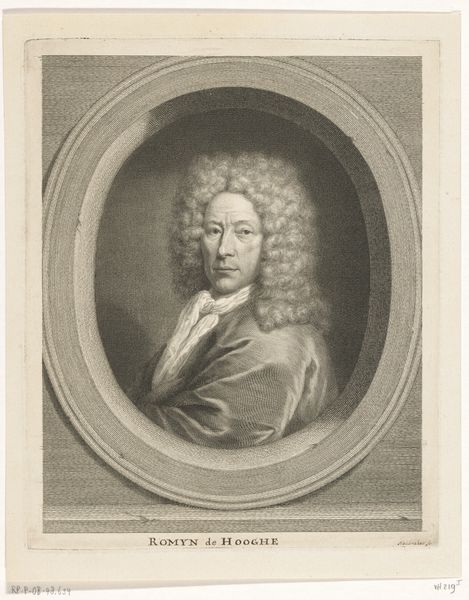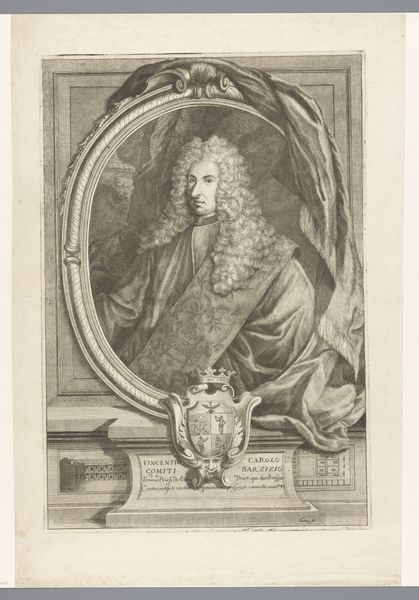
intaglio, engraving
#
portrait
#
baroque
#
intaglio
#
engraving
Dimensions: height 306 mm, width 204 mm
Copyright: Rijks Museum: Open Domain
This print of Christian Weidling was made by Martin Bernigeroth, around the turn of the 18th century. The image is made through engraving, a printmaking technique where lines are incised into a metal plate, which is then inked and pressed onto paper. Look closely, and you can see how the varying thickness and density of lines create a sense of volume, texture and light. Bernigeroth has masterfully used this technique to depict Weidling's elaborate wig and the folds of his velvet jacket. The amount of work is very impressive. It must have taken hundreds of hours to render all that detail. Prints like this one were often commissioned as a way to disseminate portraits widely. The making of this print underscores the growing importance of visual culture and the rise of a market for images in the 17th and 18th centuries. This was a key aspect of early capitalism. So, by considering the material and the making of this print, we gain insight into the social and economic context in which it was created, and how these factors shaped its meaning.
Comments
No comments
Be the first to comment and join the conversation on the ultimate creative platform.

